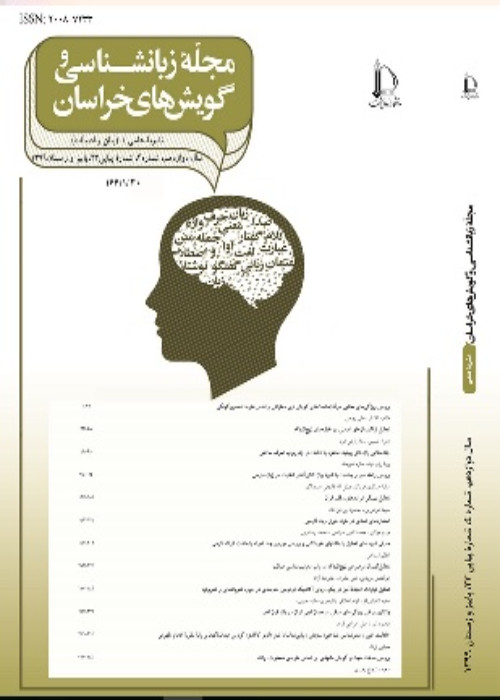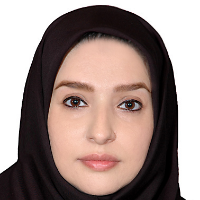Analyzing the Relationship between Variables of Age, Sex, Field of Study, Geographical Region and Religion with the Speech Act of Lie
Man achieves a multitude of purposes through social interaction. Social interactions dictate how we behave in society and sometimes in order to elude from various responsibilities, man resorts to lying. “Lie” can be defined in many different ways and based on the fields of study and schools of thought, where the definition comes from, it can have an array of various subcategories. A “lie” can be defined as denying the truth or providing intentionally false statements. Lie has been defined based on sociological, psychological, philosophical, educational, and psycholinguist factors; however, it is primarily a speech act and should therefore be studied based on linguistic factors (Meibauer, 2011). The present research aimed at analyzing the relation between different variables such as age, gender, field of study, religious orientation, and geographical region (city or place in which the related participants have grown up in), and speech act of lie, and also studying the speech act of lie in Persian to determine its semantic features and to analyze this speech act in Persian as compared to English.
Various Iranian researchers have studied the concept of lying in Iran (Seilanian Tousi, 2000; Sharif Asgari, 2011; Atrak & Mollabashi, 2012; Shafagh, 2014; Rezazadeh, 1988; Atrak, 2009) and they all conclude that lying is a strategy used by Iranians to deny the truth and to falsify information. Based on Coleman and Kay’s theory, the definition of lie prototype includes three features: 1) P is false. 2) S believes P to be false. 3) In uttering P, S intends to deceive. Results show that the lie prototype in Persian includes the three basic features of giving the asserted part of information, giving false information and belief, and communicating form of deception. So, Persian and English are similar in defining the speech act of lie based on Coleman and Kay’s theory (1981).
The present research is a descriptive, analytical, and field study. This research aims to analyze the relation between different variables such as age, gender, field of study, religious orientation, geographical region (city or place in which the related participants have grown up in) and speech act of lie, and also to study the speech act of lie in Persian to determine its semantic features and to analyze this speech act in Persian as compared with English. In this research, Allport’s religious approaches’ questionnaire and also Coleman and Kay’s questionnaire were used. These questionnaires were given to 280 postgraduate students studying in 8 different fields at the faculty of Literature and Humanities, at Ferdowsi University of Mashhad. Choosing the participants was based on a voluntary basis and the number of participants was based on Morgan’s table of generalizability. For analyzing the data, SPSS software (Version 22) was utilized.
In order to show the possible interconnection between variables under study (age, gender, field of study, geographical region, and religious perspective) and lie as a speech act, correlation was used. The results from Allport’s religious approaches show there is only a meaningful correlation between the variable of geographical region and speech act of lie since the level of significance of the test for these two variables was .093 that 0.05>.093. The level of significance for the rest of the related variables including gender, age, field of study, and religious perspective was more than 0.05 which shows there is no relation between these variables and the speech act of lie.
Based on the obtained results, all characteristics highlighted by Coleman and Kay's prototype can be seen in Persian. These characteristics include: a) It contains a finite list of properties; b) The individual properties on the list are each treated as dichotomous, c) Membership in the lie category is a gradient phenomenon; d) Satisfaction of each property on the list contributes to the over-all degree of membership of an utterance in the category lie; e) Each property on the list does not necessarily contribute equally to the degree of membership of an utterance in the category; that is, properties may be of differential importance in constituting the prototype; and, f) In this gradient framework, the bivalent concepts of the 'necessity' and 'sufficiency' of properties do not apply (Coleman & Kay, 1981). Theses obtained results are in line with Cole (1996) who compared English and Arabic, and Hardin (2010) who compared Spanish and English. All the above studies highlight the importance of cultural factors which underlie an individual’s perspective regarding the definition of lie. Based on the correlations used in the present research, only the geographical region variable correlated with “lie” as a speech act, which could show that if one grew up in the suburbs as compared to metropolitan areas, their definition and perspective towards “lie” could be different.
- حق عضویت دریافتی صرف حمایت از نشریات عضو و نگهداری، تکمیل و توسعه مگیران میشود.
- پرداخت حق اشتراک و دانلود مقالات اجازه بازنشر آن در سایر رسانههای چاپی و دیجیتال را به کاربر نمیدهد.



